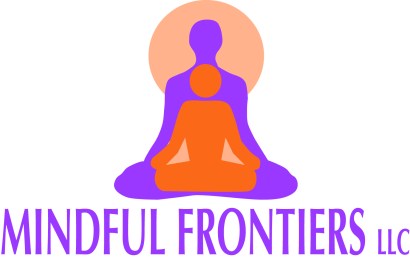Meditating in nature is a satisfying activity that anyone can do, no matter their age or mobility. Many people enjoy sitting under a tree or by a stream, lying on their back in a meadow or just sitting on the porch on a hot summer day. Communing with nature can be a rewarding experience, especially if we can feel gratitude and pay close attention to what is around us, appreciating the incredible colors, shapes, and designs. In the book, Awake in the Wild, author Mark Coleman writes, “Nature has the power to transform and awaken us. For centuries, monks, mystics, and other individuals have lived, meditated, and sought refuge in the forests, deserts, and mountains.”
We can learn a lot from Mother Nature regarding impermanence and gratitude during the summer when there is an abundance of colorful life around us. All of this beauty is freely offered with nothing asked in return for all that is produced. Gaia’s beauty reminds us that there is beauty for beauty’s sake as well as a deep interconnectedness or interbeing, a term coined by Thich Nhat Hanh.
Thich Nhat Hanh, (called Thay, or teacher, by his followers), was a firm believer in meditating with nature. “When we look into our own bodily formation, we see Mother Earth inside us, and so the whole universe is inside us, too. Once we have this insight of interbeing, it is possible to have real communication, real communion with the Earth;” from Love Letters to the Earth. The idea of interbeing is very important to Thay and his Plum Village followers. Interbeing is the belief that we are part of Nature, its beings, and all that lives on our planet. We breathe together, hold space together and depend on each other for survival. There is no self separate from our environment and we all need the same elements to survive. What happens to you affects me and what happens to our environment affects all of us.
As I recently read in a Lion’s Roar article by Valerie Brown entitled The True Nature of a Flower, “Interconnectedness can be seen in a garden. A flower does not grow in isolation. It’s permeated by non-flower elements such as sunlight, soil, water, and air. It cannot exist without these non-flower elements. When you really look at a flower, you begin to see this interconnectedness of the roots stabilizing the soil, the nectar providing food for butterflies and insects, and seed heads offering nourishment for birds”. With awareness of interconnectedness, we understand the kinship connecting plant to flower, flower to non-flower elements, and also to everything else, including humans. We cannot exist without sunlight, water, air, and the nutrients plants provide. Using meditation, we can deepen our awareness of the connection (interbeing) we have with our environment and Mother Earth whose abundance and wisdom are immense.
The following practice is intended for families (or a group of people) to practice together in a natural setting. This meditation takes place in a quiet outdoor place – the backyard, a city park, next to a stream, or in a forest. It is appropriate for all ages.
Meditating with Mother Nature
- Once you’ve found your spot in nature, gather everyone around and find a place to sit. If you have brought chairs, cushions or blankets, they can make sitting on the ground more comfortable. Barefooted would also be nice.
- As you take your seat, notice what is going on in the body or mind. We can always be aware of something, whether it is thoughts or sensations. This is Mindful Awareness.
- Close your eyes and bring attention to the body. Bring awareness to your posture and what parts of the body are in contact with the earth. Sit with as much ease as possible so that relaxation can be present.
- Breathe normally and feel the entire movement of your breathing as it moves through the body. As you breathe, feel the air coming in and going out and imagine that you are breathing with all life forms around you. Plants breathe, animals breathe, insects breathe, etc…
- Do this for a few minutes together, allowing everyone to enjoy their own breathing sensations as well as the appreciation that there’s a community breathing together.
- Now, bring your awareness to the natural environment around you. What do you hear? What do you feel? Are there sensations in relation to the areas that are in touch with the earth? Tickling of grass, Crumbling of earth, Solidity of rocks …?
- Open your eyes and look around you. What do you see? Trees swaying in the wind. A bird on a branch, an ant on the ground; pay attention carefully and with a curious heart.
- Allow everyone time to silently engage with their surroundings so that there is an awareness of the relationship we have with all kinds of life forms – the plants, the insects, the trees, the birds, and even the hidden animals. Acknowledge that we are all part of this living, breathing ecosystem. Even if the family or group can only sense this for a short time, it is worthwhile, and with practice, the time can be extended. (A valuable goal is to sit in nature for at least 30 minutes.
An audio version of this featured meditation is available on the Welcoming a Mindful Future podcast via Spotify, Apple, and Google podcast platforms.
Anne-Marie Emanuelli is the founder and Creative Director at Mindful Frontiers LLC, an education-based mindfulness meditation center offering workshops, classes, and coaching for children, families, individuals, and classrooms. For more information please visit the website at MindfulFrontiers.net.
Originally published on The Taos News, July 13, 2023








